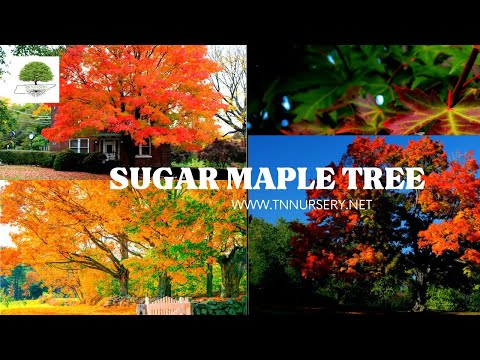Sugar Maple Trees For Sale - Acer Saccharum
Sugar Maple Tree is a deciduous, fast-growing, large shade tree with beautiful golden-orange fall leaves. It is an essential tree for creating a beautiful landscaping scheme. This fast-growing shade tree provides fresh oxygen and absorbs airborne toxins with its green foliage in Spring and Summer and vibrant foliage in Autumn.
The Latin name is Acer saccharinum. It is super hardy in cool and warm zones and is highly sought after by homeowners all over the United States. Its lifespan is more than 70 years. Acer saccharinum provides food and shelter for birds, pollinators, and other wildlife, and it is as beneficial to the ecosystem as it is beautiful and aesthetically pleasing to the human eye.
Plant Details - Sugar Maple Tree
Family: Sapindaceae
Light Requirement: Full Sun
Water Needs: Moist
Height: 60 – 70 ft.
Spread: 40 – 50 ft.
Growth Rate: Fast
Bloom Time: Spring
Flower Color: Yellow
Wildlife Value: Attracts bees, butterflies
Landscape Uses and Maintenance – Sugar Maple Tree
These trees are incredibly statuesque, adding a touch of elegance to your landscape. Their excellent upright yet rounded branching is highlighted in the winter. Autumn color is bright orange and red, making thema lovely option for creating fall color in your landscape.
This is an ideal shade tree for your yard that many generations will love to come, especially if you are starting your own sugarbush. Plant a couple at the edge of your property to create shade for passersby or to lower your heating costs. It's a lovely tree to sit and relax under with a book!
Flowers of The Sugar Maple Tree
The flowers of the tree are small and bloom in early spring. They are bright yellow in color. The flowers are not showy. They are later replaced by their signature winged seeds (samaras) that “helicopter” their way to the ground.
Plenty of wildlife is attracted to the seeds, including mammals and birds. Prune damaged or diseased branches. This tree is not prone to many pathogens. When young, it is not deer-resistant. Protect with caging.
Noteworthy Characteristics
Sugar Maple Tree is the essential tree for a maple syrup business. Create your own sugarbush in your backyard and try to learn this old-fashioned skill. You will taste – and reap - the rewards of homemade maple syrup! It is the host plant for many different butterfly species, including Rosy Maple, Imperial, and Cecropia silk moth.

Exposure
The Sugar Maple Tree flourishes in full sun to partial shade. It favors at least 4-6 hours of direct sunlight daily but can endure some shade, especially in hotter climates. Optimal growth occurs with good sun exposure for vibrant fall color.
Height at Maturity
Over 25 Feet
Usage
Shade
Shipped As
Bare-root
Ships
UPS
Planting Zones
3-9





